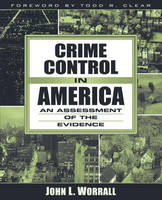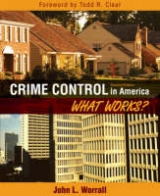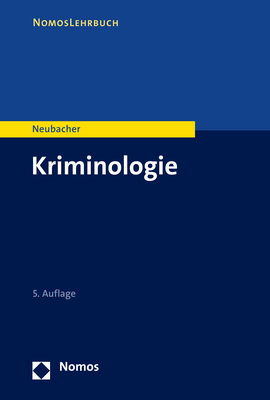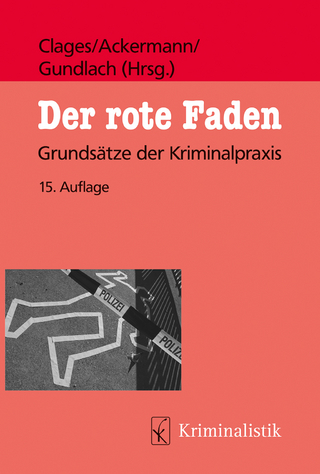
Crime Control in America
Pearson (Verlag)
978-0-205-41879-4 (ISBN)
- Titel erscheint in neuer Auflage
- Artikel merken
I. INTRODUCTION.
1. Identifying and Evaluating Crime Control.
Introduction.
The Crime Problem in America.
Approaches, Not Just Policies.
On the Importance of Definitions.
Evaluating Success: An Impossible Task?
Displacement and Diffusion.
The Tentative Nature of Scientific Knowledge.
How Resources Dictate Public Policy and Guide Research.
Academic Crusaders and Bandwagon Science.
How Crime Control is Accomplished: A Preview of What’s to Come.
Does it Work?
Conclusion.
2. Crime Control Perspectives.
Introduction.
Operational Perspectives.
Political Perspectives.
Other Perspectives.
Goals of Crime Control.
Conclusion.
II. LAW ENFORCEMENT APPROACHES.
3. Traditional Policing.
Introduction.
The Theory of Traditional Policing.
Does Hiring More Cops Reduce Crime?
Freeing Up Resources.
Removing Supposed Procedural Restraints.
The Problem With Being Reactive and Random.
Bring in the Detectives.
Other Traditional Approaches to Policing.
Conclusion.
4. Proactive, Directed, and “Creative” Policing.
Introduction.
Proactive Arrests.
Interrogations and Enhanced Supervision.
Directed Patrol.
The Broken Windows Law Enforcement Approach.
Police-Corrections Partnerships.
More Partnering: Multijurisdictional Drug Task Forces.
Compstat.
Conclusion.
5. Community Involvement in Policing.
Introduction.
Community Justice.
Problem-Oriented Policing.
Community Policing: Some History.
Community Policing: What is It?
Community Policing: Is It Really Happening?
Structural Change.
The Definition Problem Rears Its Head.
Research on Community Policing’s Effectiveness.
Conclusion.
6. Prosecutors and Crime Control.
Introduction.
The Harder Side of Prosecution.
The Softer Side of Prosecution.
A Plea Bargaining Pandemic?
Conclusion.
III. COURTS, CORRECTIONS, AND LEGISLATIVE APPROACHES.
7. Incapacitation and Legislative Approaches.
Introduction.
Pretrial Incapacitation.
Post-Trial Incapacitation.
Fines, Fees, and Forfeiture.
Legislative Bans.
Restrictions, Regulations, and Buy-Backs.
Conclusion.
8. Tough Sentencing and Deterrence.
Introduction.
Types of Sentences.
Does Sentence Length Matter?
Determinate Sentencing.
Sentence Enhancements.
Mandatory Sentencing.
Capital Punishment.
Deterring Sex Offenders.
Deterring Gang Violence With Injunctions.
Conclusion.
9. Probation, Parole, and Intermediate Sanctions.
Introduction.
The Organization and Administration of Probation and Parole.
Probation and Parole Issues.
Intermediate Sanctions.
Conclusion.
10. Rehabilitation, Treatment, and Job Training.
Introduction.
Criminals Are Not Created Equal.
Rehabilitation.
Treatment.
Job Training.
More Lessons From Meta Analysis.
Conclusion.
11. Crime Control in the Courts and Beyond.
Introduction.
Diversion.
Shaming.
Restorative Justice.
Problem-Solving Courts.
Conclusion.
IV. APPROACHES BEYOND THE CRIMINAL JUSTICE SYSTEM.
12. Individual, Family, and Household Crime Control.
Introduction.
Individual Crime Control.
Household and Family Crime Control.
Conclusion.
13. Crime Control in the Community and in Schools.
Introduction.
Community Crime Control.
School-Based Crime Control.
Conclusion.
14. Reducing Criminal Opportunities Through Environmental Manipulation.
Introduction.
A Quick Return to Theory.
How Environmental Manipulation Occurs.
The Effectiveness of Environmental Manipulations.
Conclusion.
V. JUVENILE CRIME CONTROL.
15. Juvenile Crime Control.
Introduction.
Juvenile Crime.
Differences Between the Adult and Juvenile Justice Systems.
Recent Reforms in Juvenile Justice.
Making Sense of Juvenile Crime Control.
Juvenile Crime Prevention.
Juvenile Crime Control.
Conclusion.
VI. CONCLUSION.
16. Putting It All Together, Explaining Crime Trends.
Introduction.
A Quick Review.
Three Important Themes.
Explaining Crime Trends.
Conclusion.
Appendix: An Ultra-Brief Introduction to Criminal Justice in the United States.
| Erscheint lt. Verlag | 6.9.2005 |
|---|---|
| Sprache | englisch |
| Maße | 191 x 235 mm |
| Gewicht | 753 g |
| Themenwelt | Recht / Steuern ► Strafrecht ► Kriminologie |
| ISBN-10 | 0-205-41879-1 / 0205418791 |
| ISBN-13 | 978-0-205-41879-4 / 9780205418794 |
| Zustand | Neuware |
| Haben Sie eine Frage zum Produkt? |
aus dem Bereich



